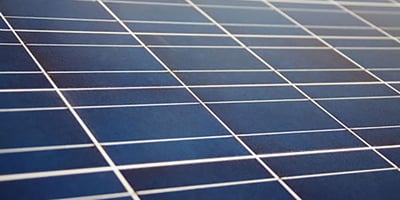
Michigan’s solar energy industry is experiencing some confusion right now. For example, under the new federal administration, the outlook for clean energy is a spotlight industry for growth and sustainability, but there are no current solar incentives for commercial buildings or residential structures from the State of Michigan. Additionally, on their Federal Income Tax, businesses can currently claim 26% of the cost of a solar photovoltaic (PV) system if installed during 2020 – 2022. This incentive will reduce to 22% in 2023, and 10% in 2024 and thereafter1. On a positive note, the cost of solar products is down 45%2 and expected to continue going down, and so is the price for lithium batteries for personal storage to be used on cloudy days or during a power outage.
While fossil fuels are considerably less costly, they are expected to keep increasing in cost and are a variable expense for users. Specifically, in Michigan, Consumers Energy has won a Public Service Commission hearing3 to increase their fees as they plan to make infrastructure improvements and clear trees to help minimize power outages. Therefore, solar energy would help manage energy costs and keep them consistent for planning, with a complete payoff as a long term investment. Furthermore, the outlook is that the number of solar energy units nationally are going to increase by 3 times as many over the next decade4.
I’m not really trying to steer you in either direction, however if solar energy is something you’ve been interested in adding to your business, I’ve provided some information below that I researched about what is needed from a building standpoint to make it happen.
It's good to know that the up-front cost of engineering, purchasing, and installing solar panels for commercial building owners can be six figures, but certain solar materials can be depreciated over five years, and the with the cost of solar systems going down each year, it is now expected to be paid off in approximately 8 -12 years.6
According to Duro-Last Roofing’s website7, our reputable, local colleague and roofing specialists, “Rooftops are an excellent place to install solar systems because they are typically unused and unobstructed spaces.” Many commercial buildings have a lot of real estate on their rooftops that is suitable for enough solar panels to significantly reduce energy costs. Alternatively, if a business has adequate property surrounding their building, they have the option of selecting their grounds for the panels.
Even though we are a commercial building expert, we have not had experience with installing solar photovoltaics and advise that you work with a reputable solar engineer when designing your system. However, we want to share with you general requirements of your rooftop and structure to have panels installed by a professional installer. Firstly, most solar systems have a 25-30 year warranty, so it’s critical that your roof is in a condition to also last the same duration. Rooftop repairs will be difficult to make under the panels. The weight per panel, as stated by Judith Shadzi in her article, Commercial Solar Panel Types, Tips, and Pros/Cons of Investing in Solar, is “generally 3 lbs per square foot…a ballasted system will add 4 to 6 lbs <per unit>. If the building was built after 1970, it should support these loads. However, if concerns arise, a structural engineer will review the property.”5 Shadzi’s article, provides a plethora of information discussing system types, cautions, financing options, and more.
Shadzi’s article also instructs that a project starts with a site audit by a solar company to ultimately “recommend a location, orientation, slope of the system, size and energy production”. Then solar engineers design a system plan, which must undergo a state or municipality’s permitting process. Once permits are secured, the solar company can install the panels, which on a rooftop is done by drilling holes “into the rafters in alignment with the solar panel mounts. Thin pieces of metal are then placed over the mounts, preventing water leakage. The panels are attached to the rails and connected together…and to the inverter.” A final inspection is required, then a request is made to connect to your utilities and a monitoring plan is implemented to monitor performance and savings.
The Shadzi article is listed below as a reference and was a considerable resource to developing this article.
1Guide to the Federal Investment Tax Credit for Commercial Solar Photovoltaics, U.S. Department of Energy, Office of Energy Efficiency & Renewable Energy
2 Michigan Solar, SEIA
3 Crain’s Detroit Business, Michigan Regulators OK $100 Million Rate Hike for Consumers Energy, https://www.crainsdetroit.com/energy/michigan-regulators-ok-100-million-rate-hike-consumers-energy 12/17/20
4 Solar Industry Data, Solar Industry Growing at Record Pace, SEIA
5 Let’s Go Solar, Commercial Solar Panel Types, Tips, and Pros/Cons of Investing in Solar, Judith Shadzi, https://www.letsgosolar.com/solar-panels/commercial-solar-panels/
6 Duro-Last Roofing, Solar Ready Roofing Systems, https://duro-last.com/solar_ready
7 Michigan Solar Solutions, Frequently Asked Questions about Going Solar in Michigan, https://www.michigansolarsolutions.com/education/faqs

